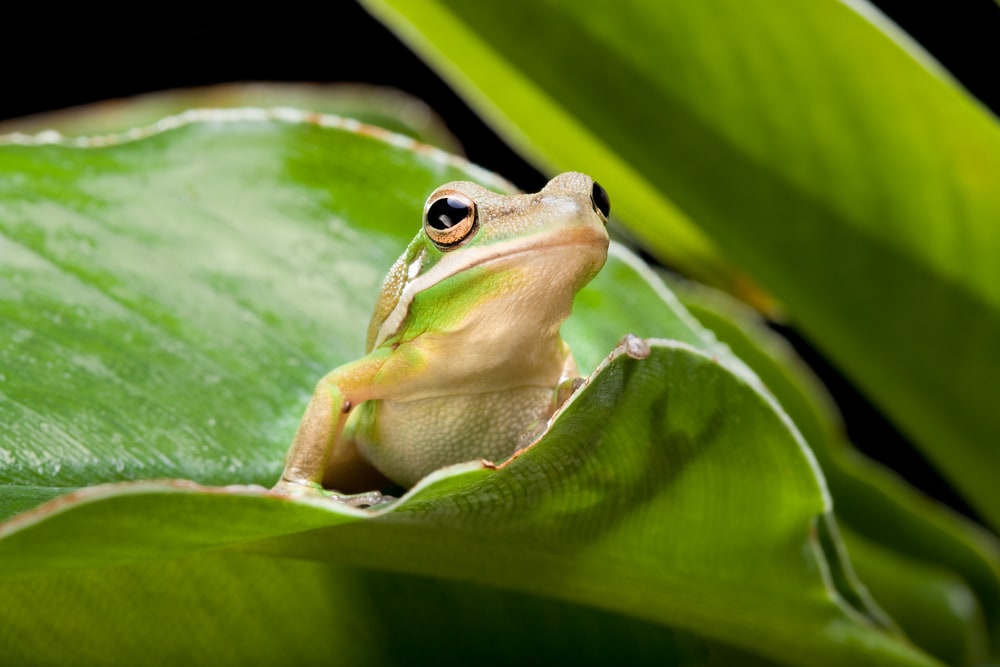
Florida’s warm, wet climate makes it an ideal habitat for all kinds of reptiles and amphibians. Frogs and toads especially find plenty of ideal habitats in the state, from the sandy marshes and cypress swamps to the thousands of lakes and ponds across the state. While not very big, frogs and toads play vital roles in their ecosystems as both predators and prey.
In this article, we’ll go over native species in Florida, a couple of invasive ones and their impact, as well as answer some common frog questions.
Frog vs Toad
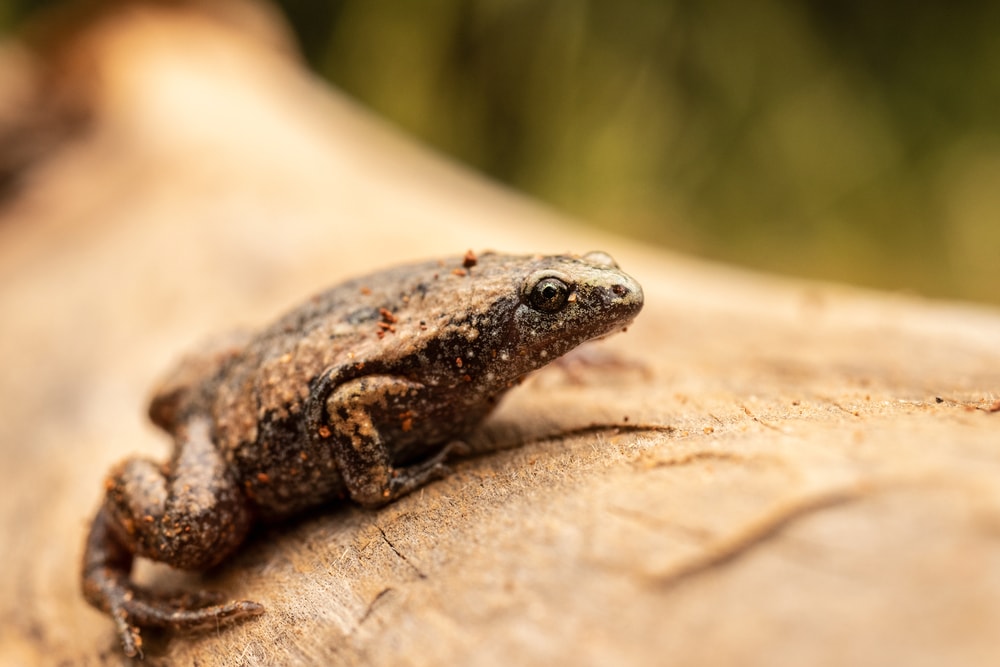
Frogs and toads are both amphibians, look very similar, and can show up in the same places sometimes. It’s easy to confuse the two, especially since we sometimes use the two words interchangeably in conversation. While similar, frogs and toads are distinctive animals and can be distinguished by some key characteristics.
Frogs
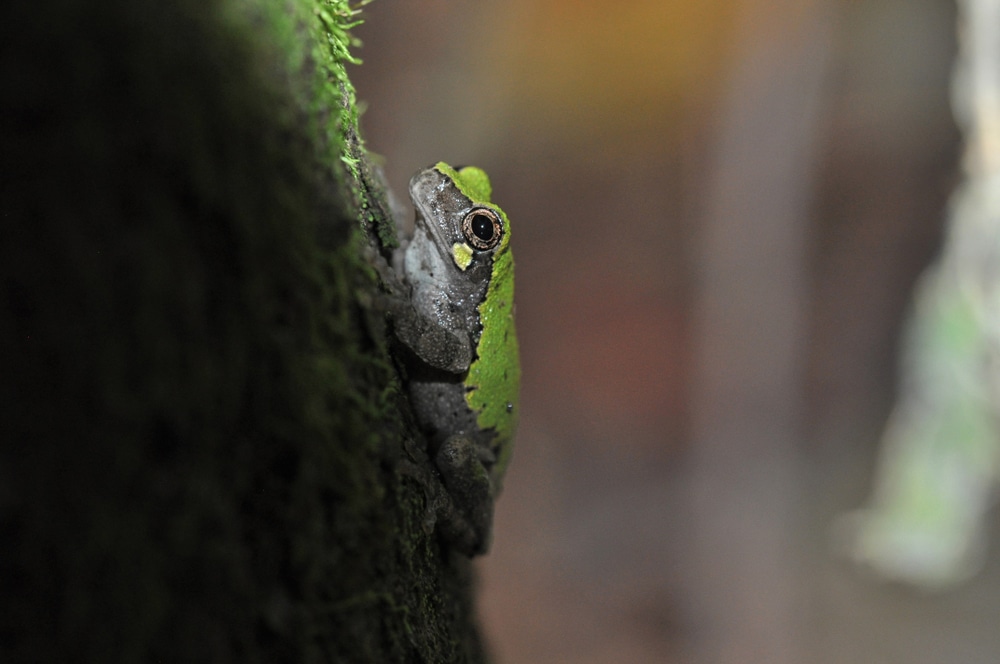
Frogs are water-dwelling animals, spending most of their time in and around bodies of water. They usually have slick, smooth skin and legs longer than their head and body combined. The body of a frog usually looked trimmed and athletic, with a pointed head and nose and a more elongated shape.
Toads
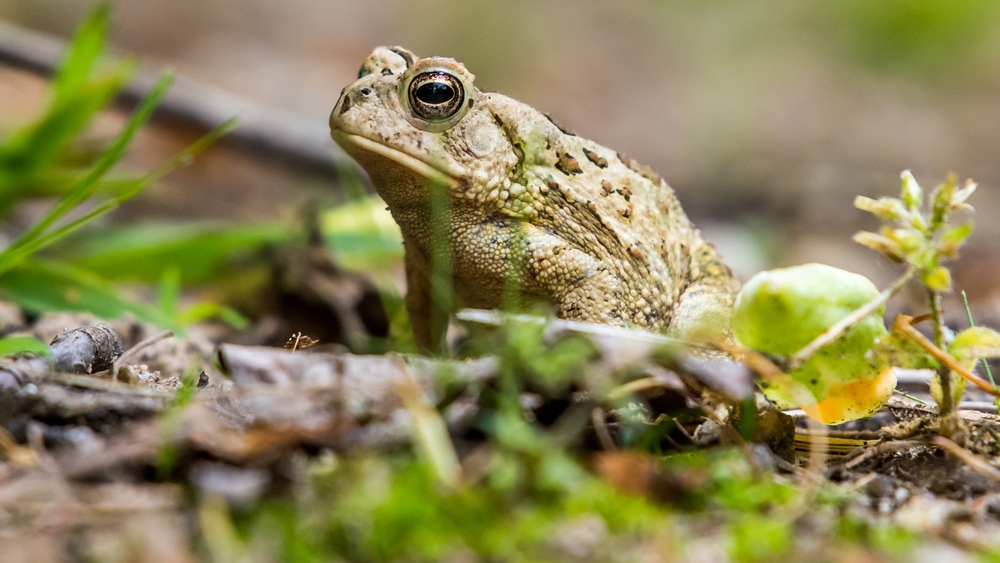
Toads don’t live in the water, instead favoring drier areas and burrows. They usually have rough, bumpy skin and shorter legs more suited to crawling than hopping. The body of a toad is squat, chunky, and compacted. Their heads and mouths are more rounded and flatter.
You may also like: Learn More about Amphibians and the More Than 30 Amazing Different Amphibian Species: Complete with Images, Facts, and More!
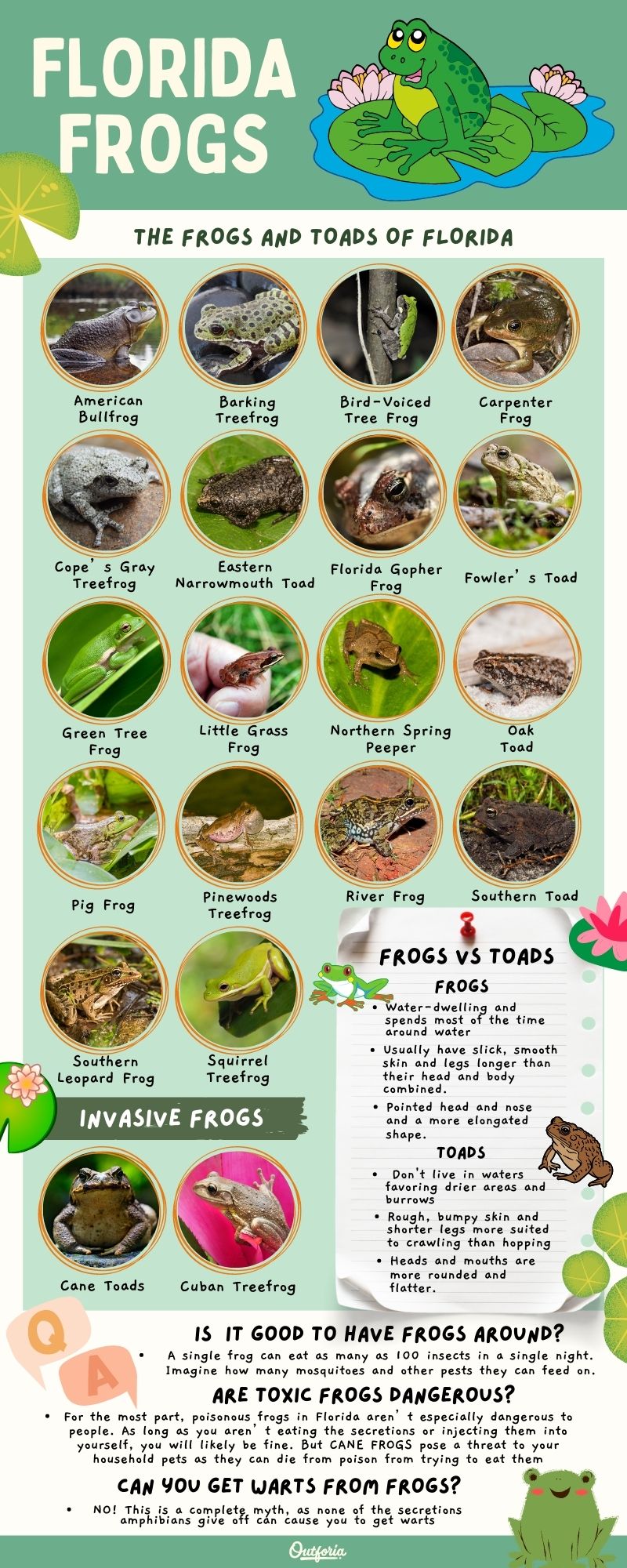
share this image on your site
<a href="https://outforia.com/florida-frogs/"><img style="width:100%;" src="https://outforia.com/wp-content/uploads/2022/03/florida-frogs-infographic.jpg"></a><br>florida frogs <a href="https://outforia.com">Outforia</a>20 Species of Florida Frogs and Toads
1. American Bullfrog
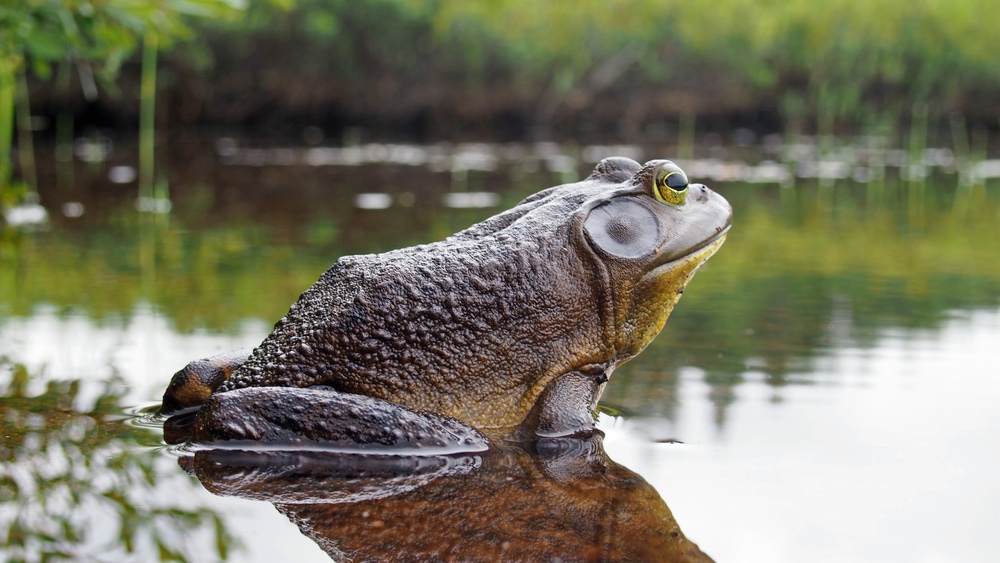
American bullfrogs are the largest frog species native to North America. They grow up to 8 inches (20 cm) in body length and have a large external eardrum beneath their eyes. While they do have a deep call, frightened ones can sometimes sound like a meowing cat.
Bullfrogs have a massive range across North America but are native within the state of Florida. They typically prefer slow-moving bodies of water, from ponds and lakes to streams and canals. Bullfrogs feed on young birds, crayfish, insects, and other frogs.
2. Barking Treefrog
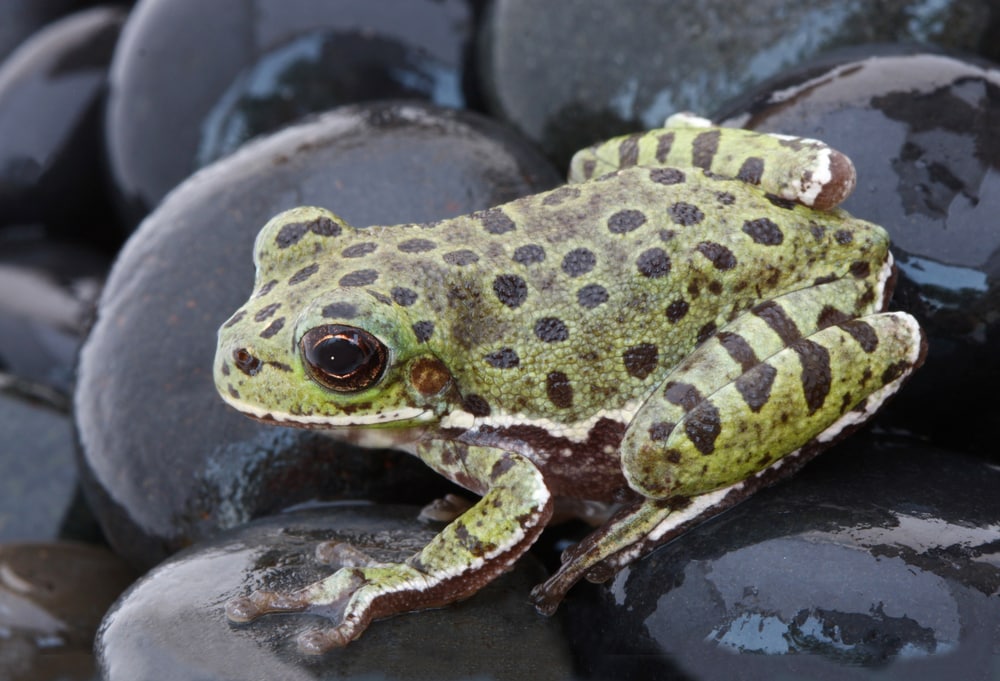
The barking treefrog is one of the largest tree frogs in the country. They tend to vary from dark brown to a pale yellow, but always have some form of green coloring. Barking tree frogs can grow to have a body length of around 2 1⁄2 inches (6.3 cm).
Most often, barking tree frogs prefer sandy pine forests and swamps. When it gets too cold or dry, they tend to go into an inactive state within burrows or under tree roots. Most of their diet is made up of larvae, insects, and worms, but they will occasionally eat other frogs.
3. Bird-Voiced Tree Frog
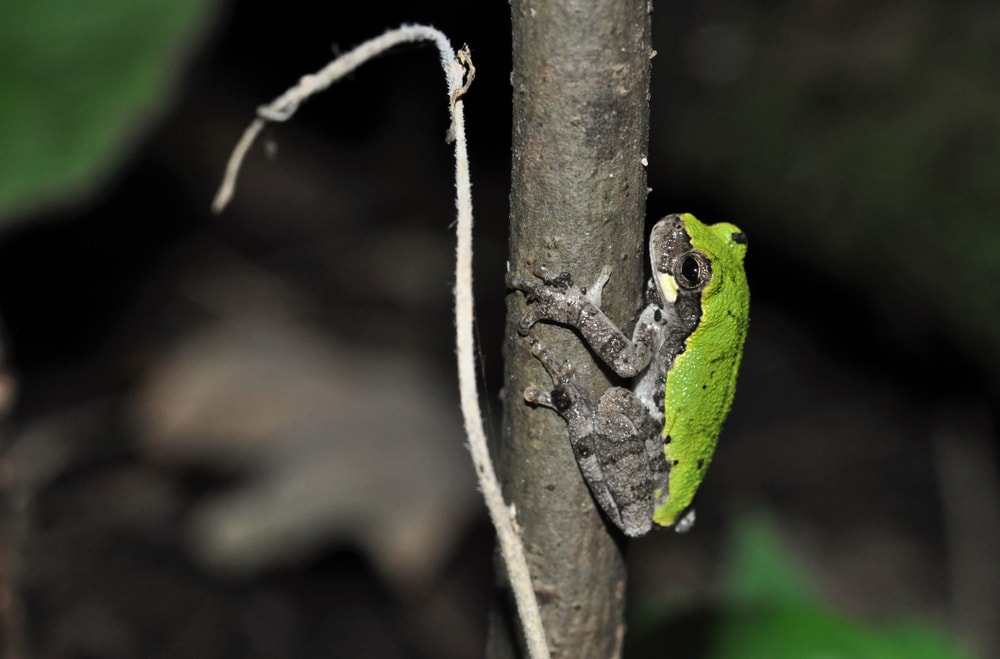
Western bird-voiced treefrogs are identified by their gray backs, black-flecked throat, and dark bar patterns. A typical adult will reach a body length of around 1 ¾ inch (4.4 cm). They usually sit on plants above the water and let out a call that sounds like a bird’s call.
Native to the panhandle of Florida, these tree frogs are most often found in the wet areas of swamps, streams, and wetlands. The color palette of bird-voiced tree frogs can change depending on the acidity and temperature of their home waters. Their diets consist of worms, insects, and smaller frogs.
4. Carpenter Frog
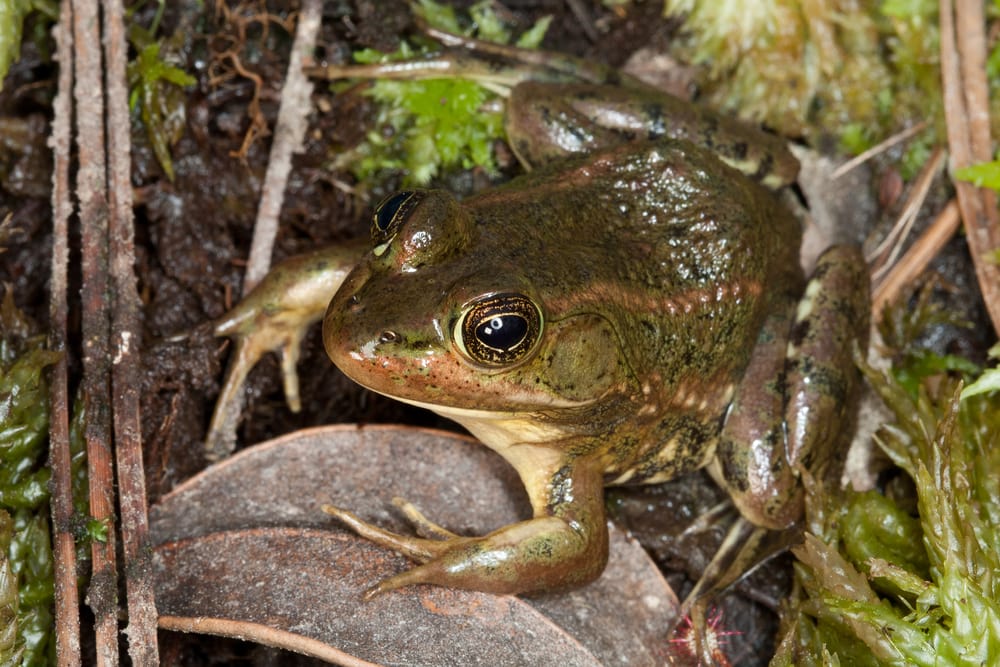
Carpenter frogs are only found in Baker and Columbia counties in Florida, in swamps bordering Georgia’s Okefenokee Swamp. They typically have greenish-brown bodies, bronze stripes down the back and sides, and a yellow underside. Most adults reach an average body length of around 2 ½ inches (6.3 cm).
Acidic cypress swamps are the favorite habitat of carpenter frogs. Their call can sound like someone hammering on a wood plank, giving them their name. Most of a carpenter frog’s diet consists of aquatic insects, crayfish, and spiders.
5. Cope’s Gray Treefrog
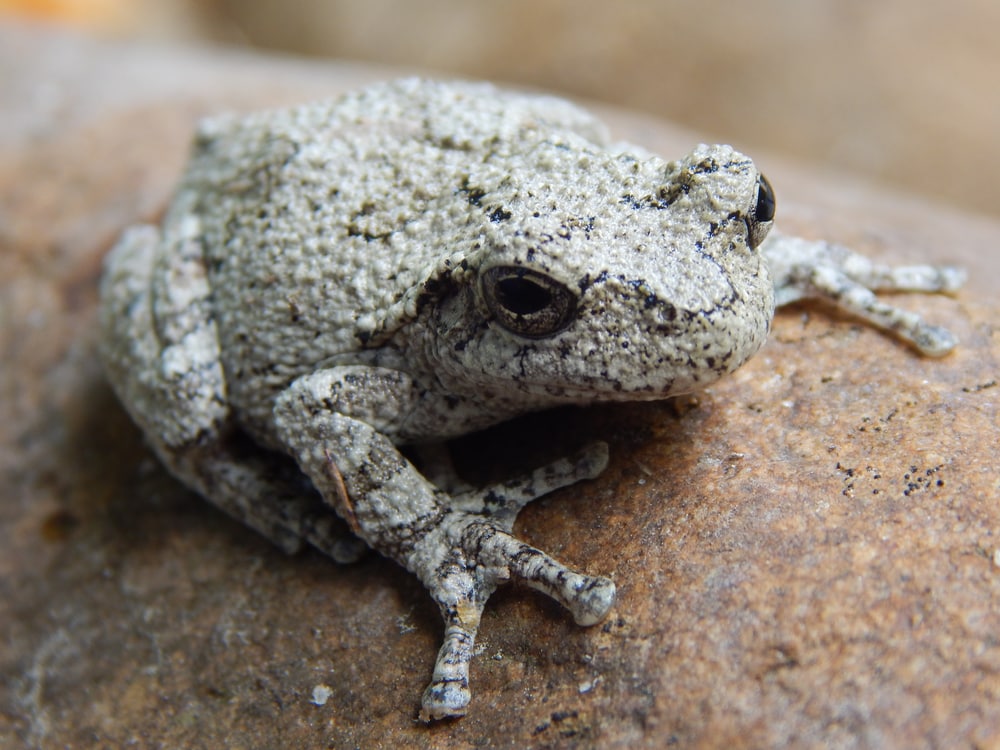
Cope’s gray tree frogs can blend into their surroundings, changing their colors to green, white, or brown. Most will be two-toned, with a dark gray patch near the center of the body. The best way to distinguish them from other tree frogs is the bright orange or yellow on their inner thighs.
Gray treefrogs can be found in any wet environment in Florida, from open-area parks to cypress swamps. Adults reach an average length of around 2 inches (5 cm). Most of their diet consists of small insects such as plant lice, mites, and other insects, but snails and slugs are also on their menu.
7. Eastern Narrowmouth Toad
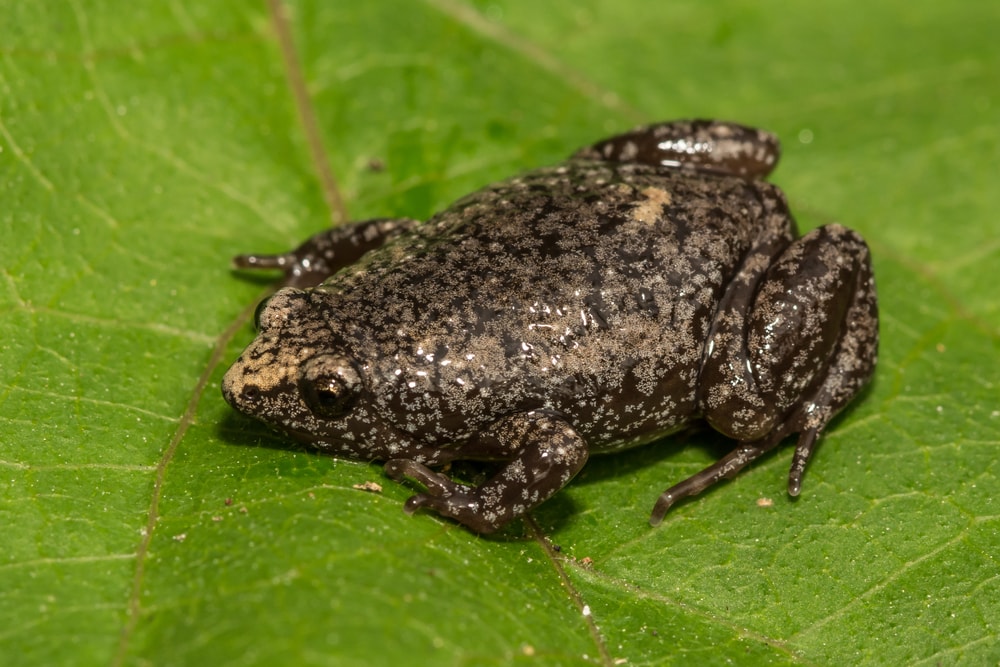
The best way to identify an eastern narrow-mouth toad is its multi-colored belly. Their dark backs have lighter stripes on them and they can almost look a silvery blue in the right lighting. Most adults reach a body length of around an inch (2.5 cm).
Narrow mouthed toads love structure, especially near water. They tend to be found under logs that were felled outside of the water most often. The call of a narrow-mouth resembles the bleating of a sheep. Most of their diet consists of ants and termites, with very few other options.
7. Florida Bog Frog
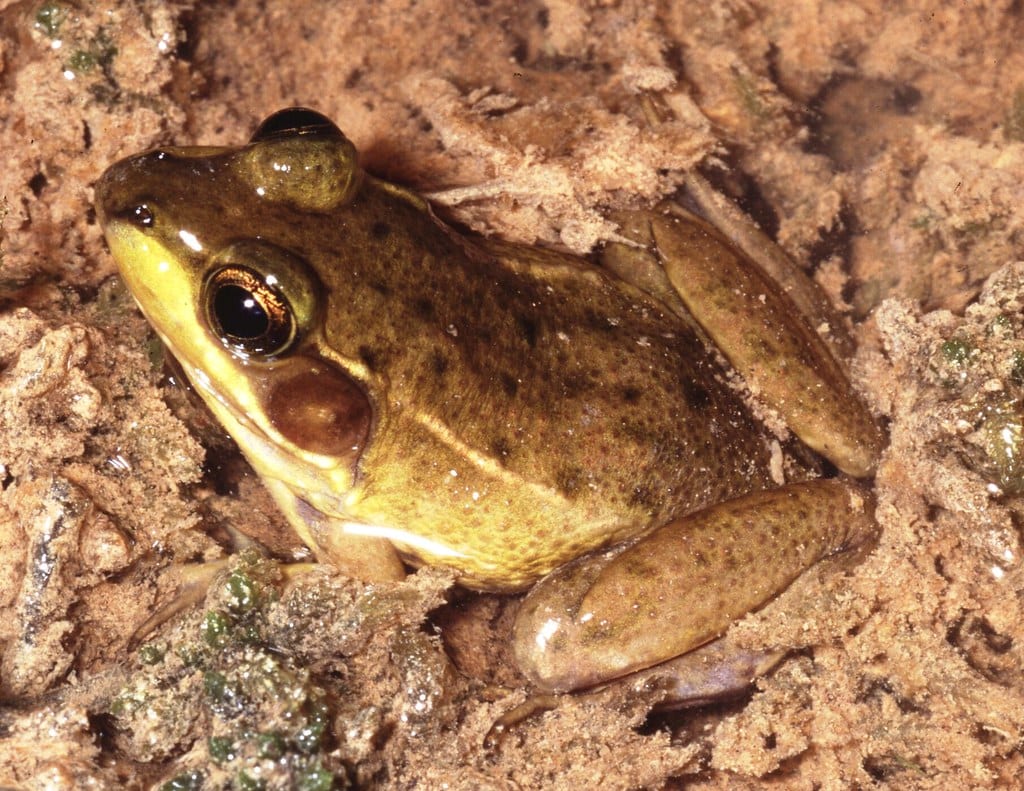
Bog frogs have dark backs, black undersides, and yellow throats. In Florida, this species is rare, occurring only in a few acidic streams in Walton, Santa Rosa, and Okaloosa counties. Its rarity has earned it special protection status by the state.
An adult bog frog will almost always have a body length under two inches (5 cm). They have two distinct calls that change by the season, one that sounds like a clucking hen and another that sounds like chuckling. Small invertebrates and ants make up a bog frog’s diet.
8. Florida Chorus Frog
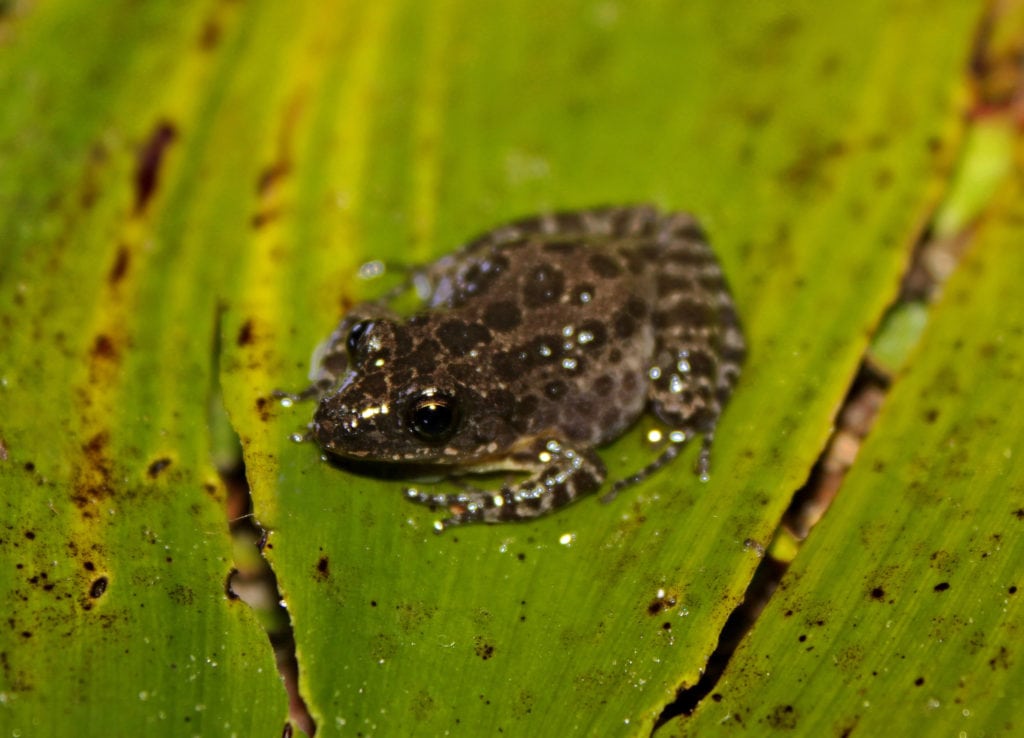
The Florida chorus frog can be found through most of the state but is rather secretive and difficult to encounter. They tend to vary in color according to the temperature, darker gray when cold and lighter gray when warm. Adult chorus frogs reach a maximum body length of around 1 ¼ inch (3 cm).
The call of a chorus frog is likened to running a fingernail over the prongs of a comb. They tend to hide at the base of grass clumps in flooded fields and marshes with only the head out of the water. Most of a chorus frog’s diet will consist of aquatic insects and invertebrates.
9. Florida Gopher Frog
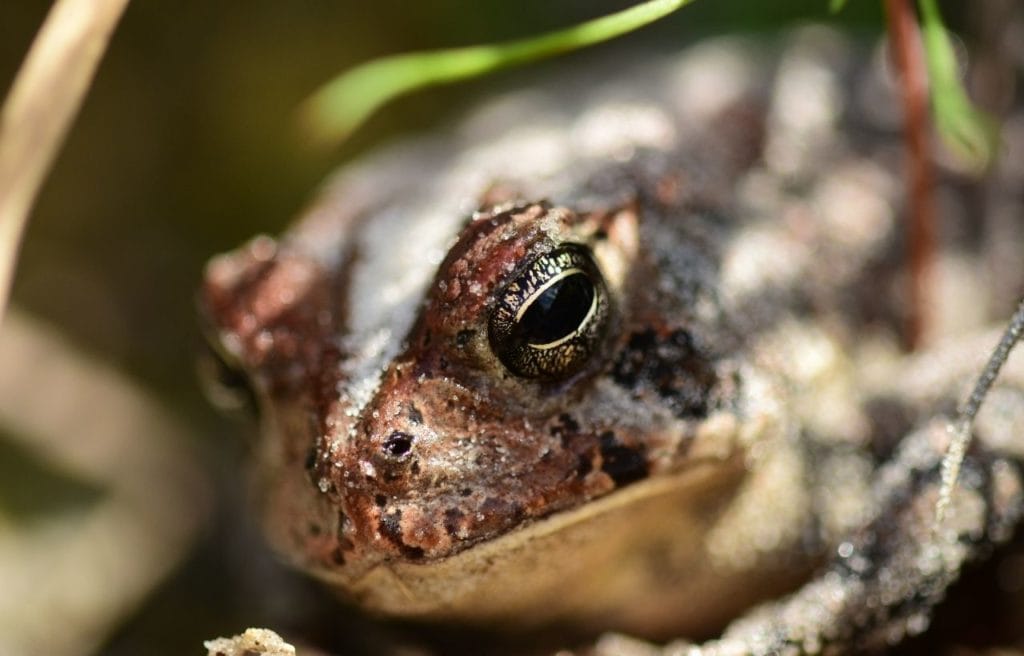
Gopher frogs have dusky gray backs with plenty of dark spots, cream undersides, and bronze stripes running along their back ridges. They get their name from the gopher tortoise and are most often found inside or near the tortoise’s burrows.
An adult gopher frog can reach a body length of around 3 inches (7.6 cm). Their diet consists of worms, spiders, beetles, cockroaches, and other frogs and toads.
10. Fowler’s Toad
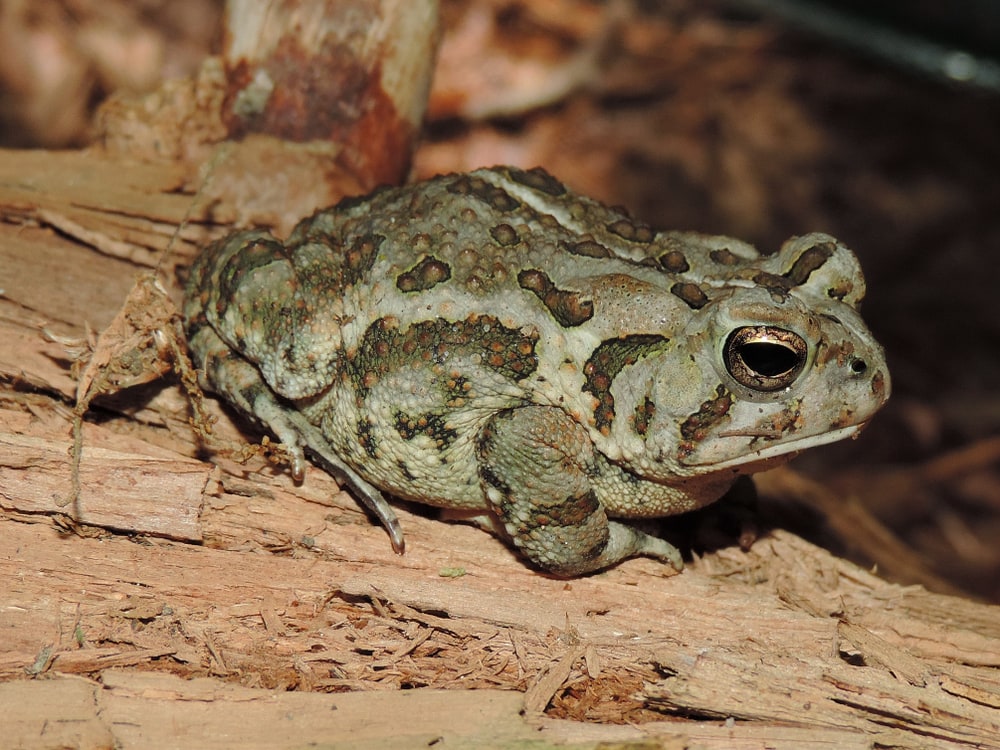
Fowler’s toads are native to the Florida panhandle region. They tend to prefer temporarily wet areas and are common in backyards, ditches, and sandy marshes. Most will have a creamy-white stripe down their back and multiple warts that are situated inside skin spots.
An adult Fowler’s toad can range in body length from 2 to 3 inches (5 to 7.6 cm). Males are smaller than females and will usually have a black throat. Insects and insect larvae make up the bulk of the toad’s diet.
11. Green Tree Frog
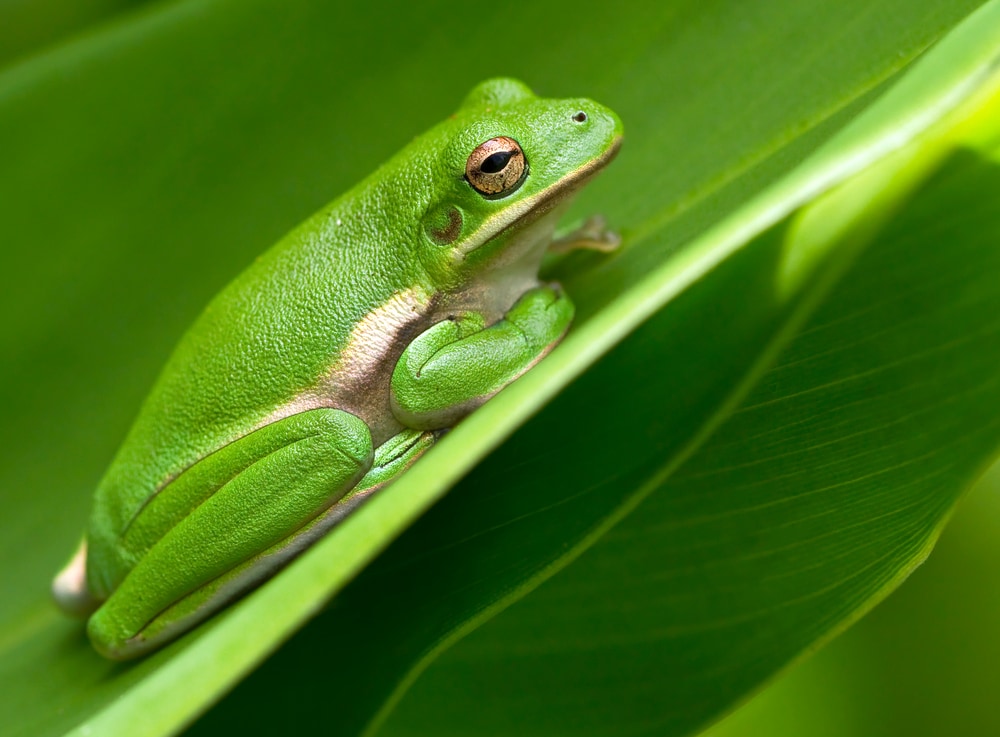
Green tree frogs are usually green but can vary in color from bright green to slate gray. Most will have a yellow or white stripe extending from the mouth along the sides of the body. These frogs are the ones Floridians hear calling before a sudden rainstorm.
An adult green treefrog will have an average body length of around 2 inches (5 cm). They use disk-shaped suction cups on their feet to cling to and climb trees in cypress swamps, lakes, and ponds. Their diet consists of invertebrates, including earthworms, waxworms, and crickets.
12. Little Grass Frog
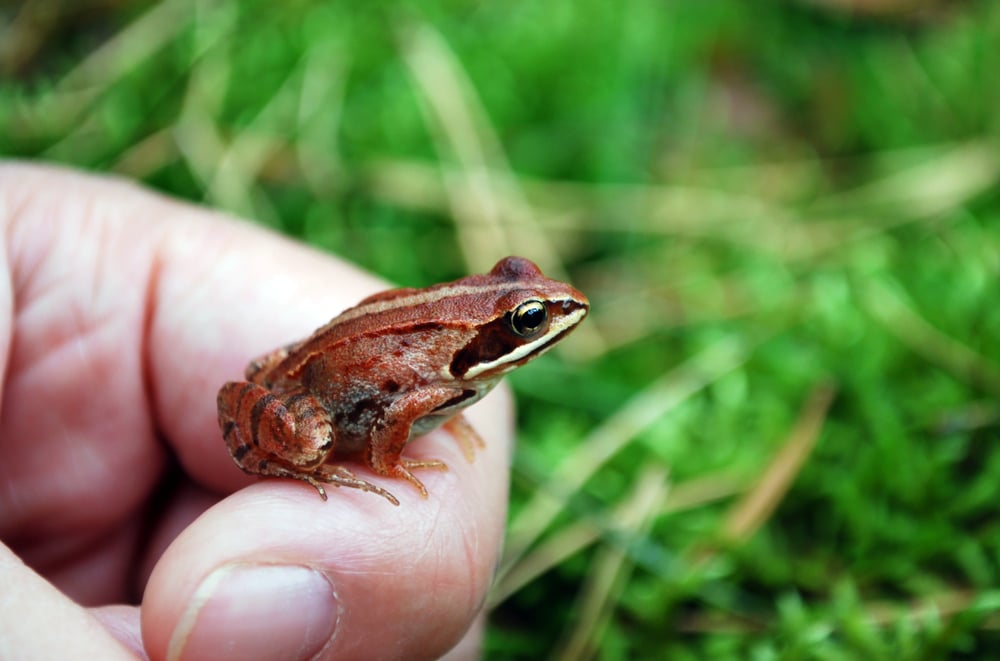
Little grass frogs can be identified by the dark line passing through their eyes and running the length of their bodies. Most of the time, they will have some variation of tan, brown, green, or red coloring. Adult grass frogs reach a body length of around half an inch (1 cm).
Ants, wasps, and beetles make up most of a grass frog’s diet. They’re most often found perched on grass stems above the surface of the water where they ambush prey. The striped pattern on their back makes them difficult to locate as they blend in with the grass.
13. Northern Spring Peeper
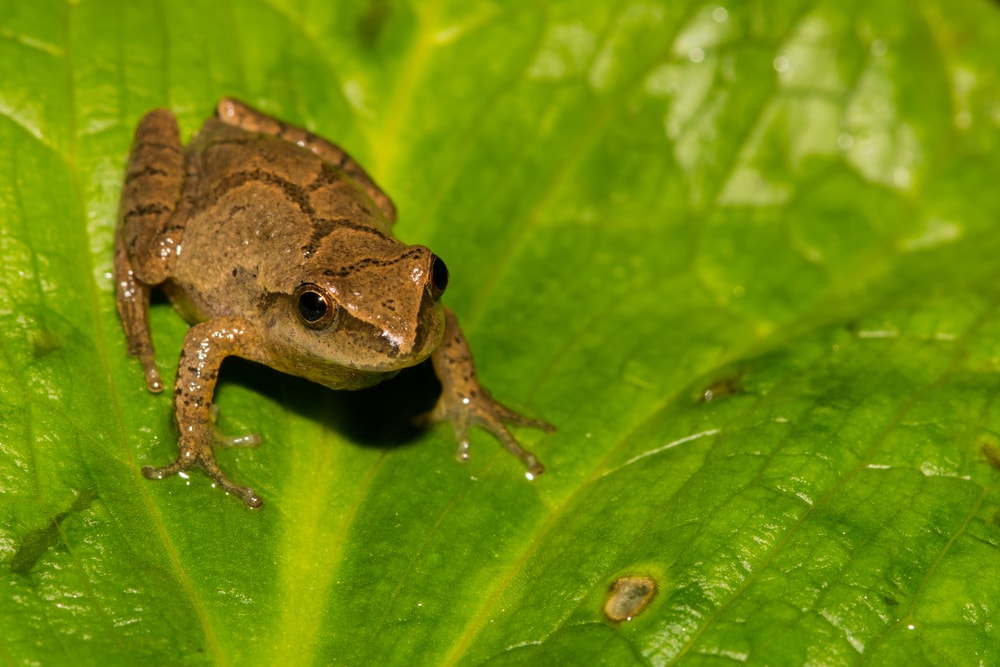
The northern spring peeper is a dull, small frog that can vary from brown titan in color. Like a few other species, they occur only in the western panhandle region of Florida. Adults will almost always have a body length of fewer than 2 inches (5 cm).
Temporary ponds and the bushes surrounding them are this frog’s favorite habitat. In cold weather, the frog goes into hibernation, only waking when it gets warm enough to find food again. Most of their diet consists of small insects such as ants, flies, and insect larvae.
14. Oak Toad
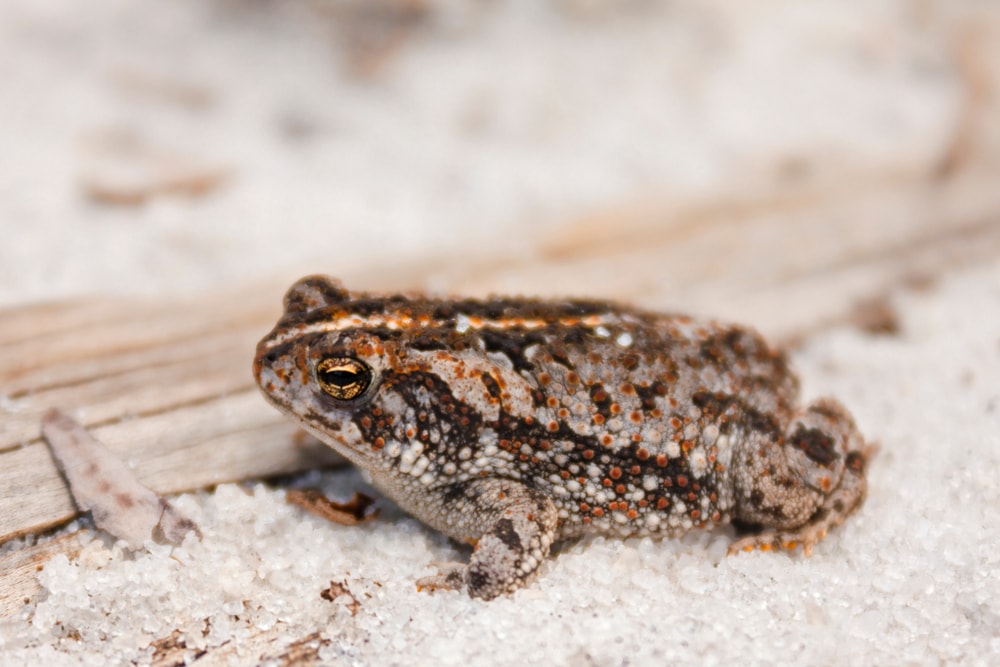
Oak toads are the smallest toad in the United States, reaching a maximum body length of around 1 ½ inch (3.8 cm). Their back colors can range from dark brown to gray, typically with three to four pairs of dark spots. Each toad always has a yellow stripe down the middle of the back.
Oak toads are most often found in upland areas of oak or pine forest. They have a “cheep-cheep-cheep” sounding call. Most of an oak toad’s diet consists of small insects they find around the roots of trees.
15. Pig Frog
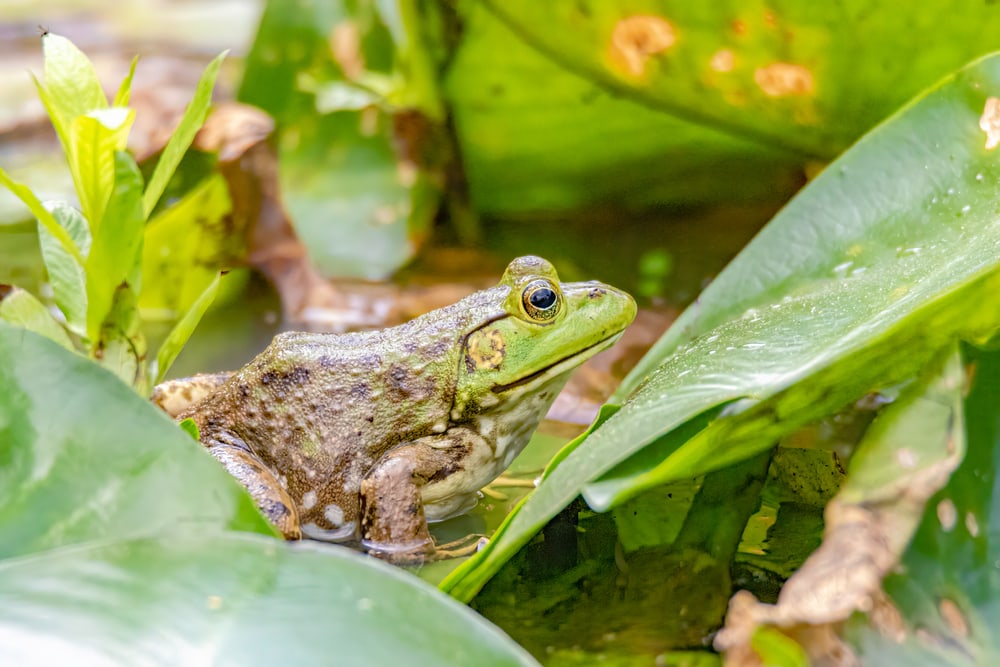
Pig frogs are usually dark brown or green on their backs, have pale undersides with a brown net-shaped pattern, and have a bronze splash on their sides. Adults can reach a body length of over 6 inches (15 cm) and are one of the most popular sources of frog legs in the state.
Pig frogs tend to stay in permanent bodies of water such as large lakes and ponds. They get their name from their call that sounds like a grunting pig. Most of their diet consists of crayfish, insects, fish, and other amphibians.
16. Pinewoods Treefrog
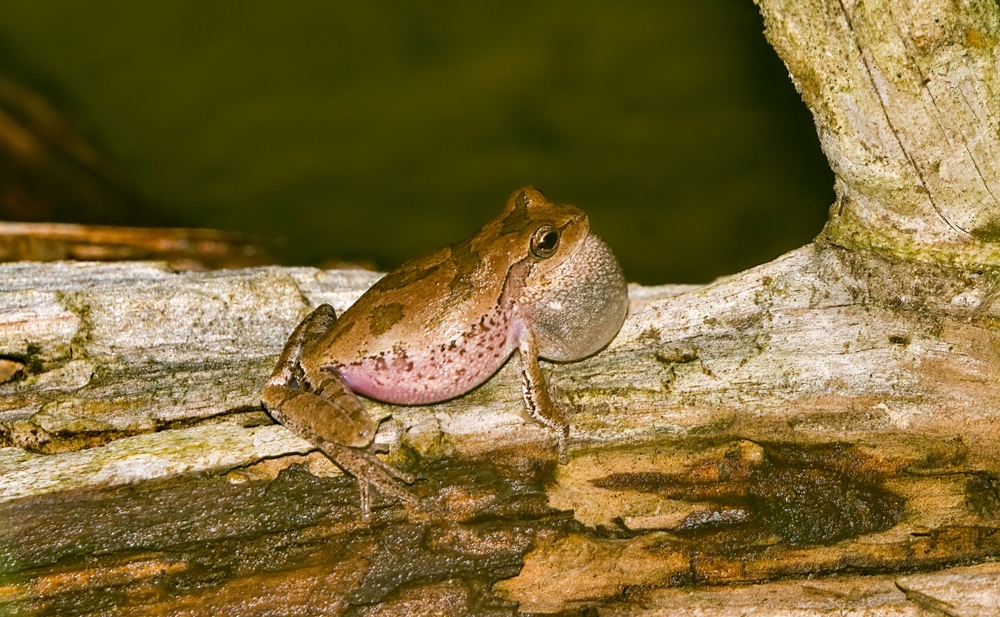
The most distinguishing feature of pinewoods tree frogs is the rows of small white, yellow, or orange spots on the insides of the thigh. Overall, they have a gray to greenish-gray coloring. Adults tend to reach a maximum body length of around 1 ½ inches (3.6 cm).
Pinewoods tree frogs are most often found in marshy pine forests and swamps where they blend in with tree bark. Their diet consists of a wide range of insects including crickets, beetles, ants, wasps, flies, and jumping spiders.
17. River Frog
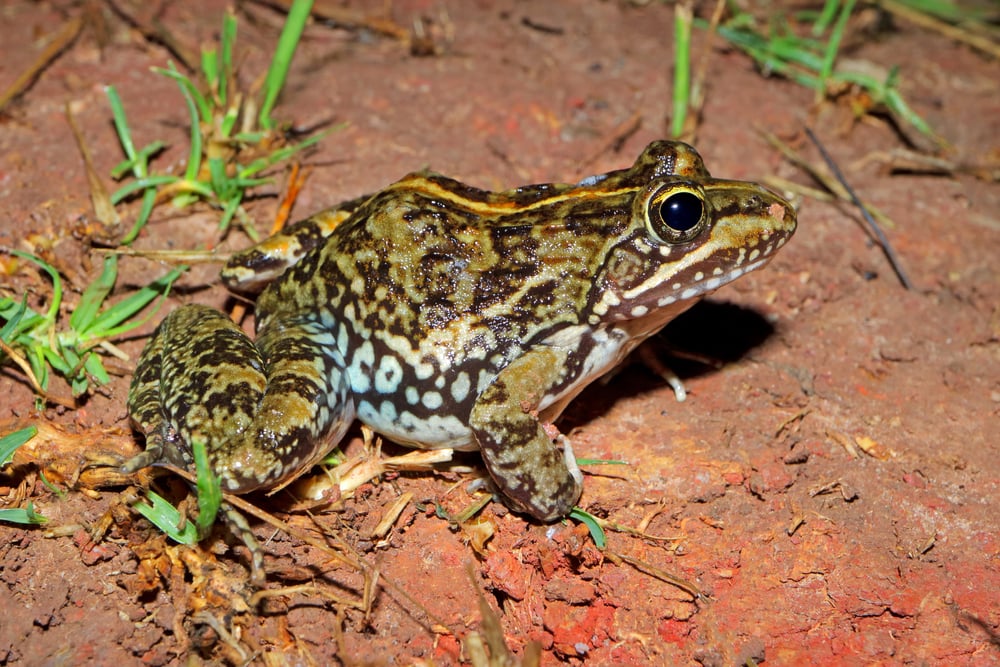
River frogs have greenish-gray back legs, blotched undersides, and light spots on their lips. Their best defense mechanism is to leave a smelly odor on anything that grabs them. Most adults will reach a body length of around 5 inches (12.7 cm), making them the third-largest frog in Florida.
As the name suggests, river frogs are found mainly in river systems, ranging from the panhandle of Florida into the central areas of the state. Small invertebrates, small frogs, and insects are their primary food sources.
18. Southern Leopard Frog
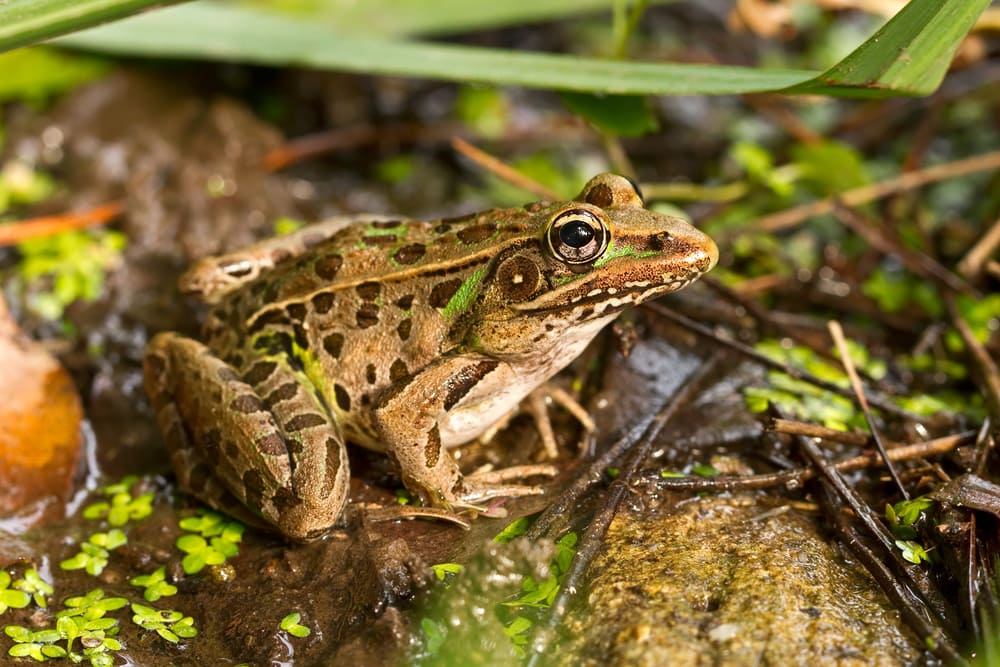
Leopard frogs are usually green or brown but have a light spot located directly on their eardrum. They have a widely varied pattern of spots that resemble that of their namesake big cat. Adults can reach a maximum body length of around 3 ½ inches (8.9 cm).
Unlike some other frog species, leopard frogs can tolerate higher levels of salinity. They can be found in brackish hardwood swamps, as well as freshwater marshes. Most of their diet consists of worms, arthropods, and small insects.
19.Southern Toad
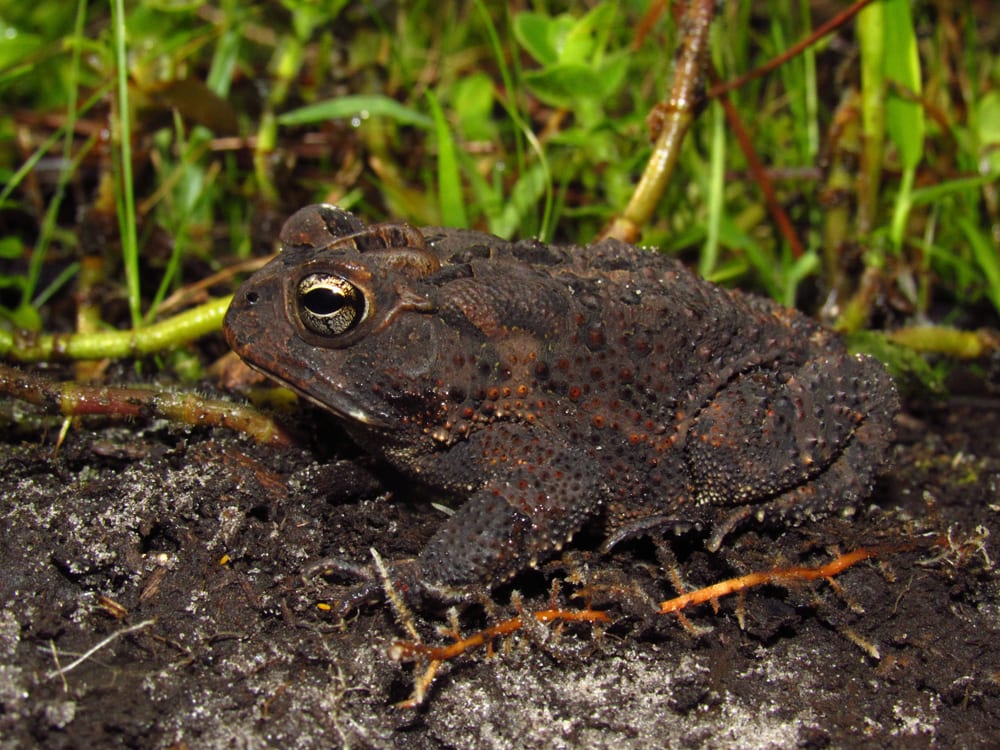
Southern toads have pronounced head knobs and are usually brown, red, or gray. While they do secrete an irritating oil, it isn’t toxic to humans and therefore isn’t considered poisonous. Adult southern toads can reach body lengths of up to 4 ½ inches (11.5 cm).
These toads are common in sandy areas, as well as swamps, marshes, and hardwood areas. Most of their diet consists of small invertebrates like snails, crickets, and other insects, but they will eat just about anything they can swallow.
20. Squirrel Treefrog
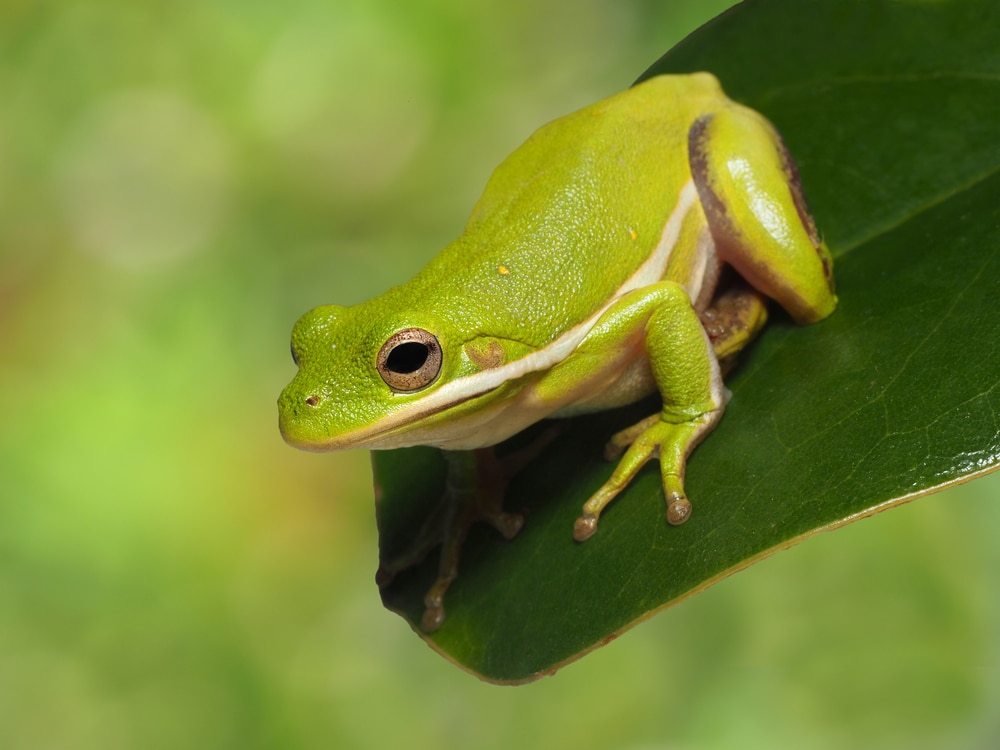
Squirrel treefrogs can range in color from green, brown, or both. Some have spots, others do not. Some even have a black bar between their eyes. The best way to identify them is by their call which sounds like a chattering squirrel.
Squirrel treefrogs are found in a wide variety of habitats, as long as their needs of a wet area and food are met. Swampy forests are the most common areas, as they climb the trees of the forest. Most of their diet consists of foraging for insects and adults reach around 1 ½ inch (3.8 cm) in body length.
You may also like: Check out the 23 Different Types of Frogs Across the Globe and Where You Can Find Them: With Images, Facts, and More!
Invasive Florida Frogs
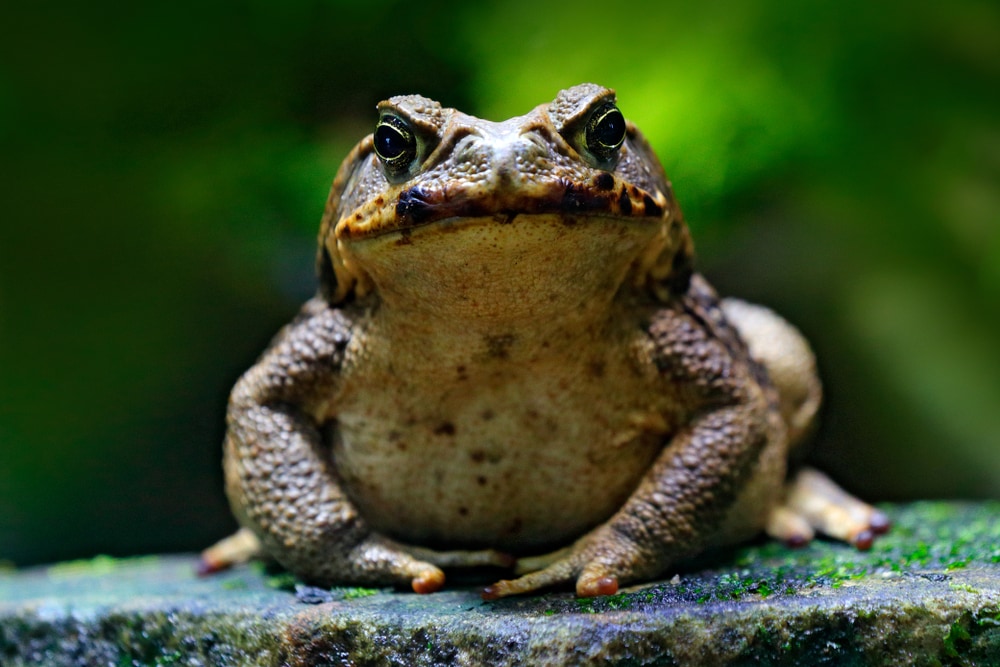
Florida has a wide variety of problematic, invasive species. From monkeys to anacondas and fish in both fresh and saltwater, it isn’t hard to find something that doesn’t belong. The Sunshine State’s warm, humid climate makes it an excellent place for a variety of species to thrive and amphibians are no exception.
We’ll discuss two exceptional examples of invasive amphibians here.
Cane Toads
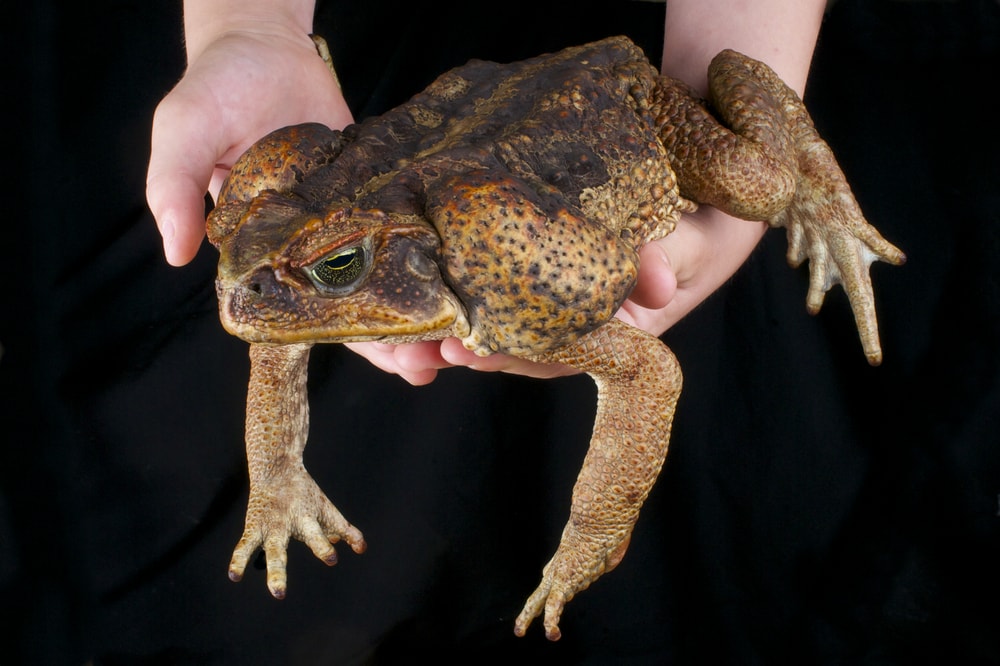
Cane toads are typically reddish or grayish-brown with a beige belly. They can be uniform in color or have dark markings on their bodies and pronounced bumps behind their eyes that are poisonous glands. They can range anywhere from 6 to 9 inches in body length (15 to 23 cm).
The natural range of cane toads extends from the Amazon River Basin to Central America and lower regions of the Rio Grande River in Texas. They’re voracious omnivores and will eat just about everything, including vegetation, insects, small birds, other toads or frogs, lizards, small mammals, and snakes.

native distribution in blue, introduced in red.
Created by LiquidGhoul, ammended by Tnarg 12345 – in Wikipedia in English. / CC BY-SA 3.0
/ Wikimedia commons
Originally, cane toads made their way to Florida when they were released into sugar cane fields to attempt to control agricultural pests. Escaped individuals from the pet trade and importers in the 1950s and 1960s are believed to be responsible for current cane toad populations in Florida.
Two main problems are present with the introduction of cane toads. First, they will outcompete and feed on other amphibian species and add pressure to other populations of animals. The other problem is their poison.
Cane toads secrete a highly toxic poison called bufotoxin from their skin glands. In humans, the secretion will usually result in skin irritation. If something tries to eat the cane toad though, it can be deadly. Creatures of just about any size are susceptible to bufotoxin when they ingest it, resulting in premature deaths of predator species such as lizards, alligators, birds, and fish.
Cuban Treefrog
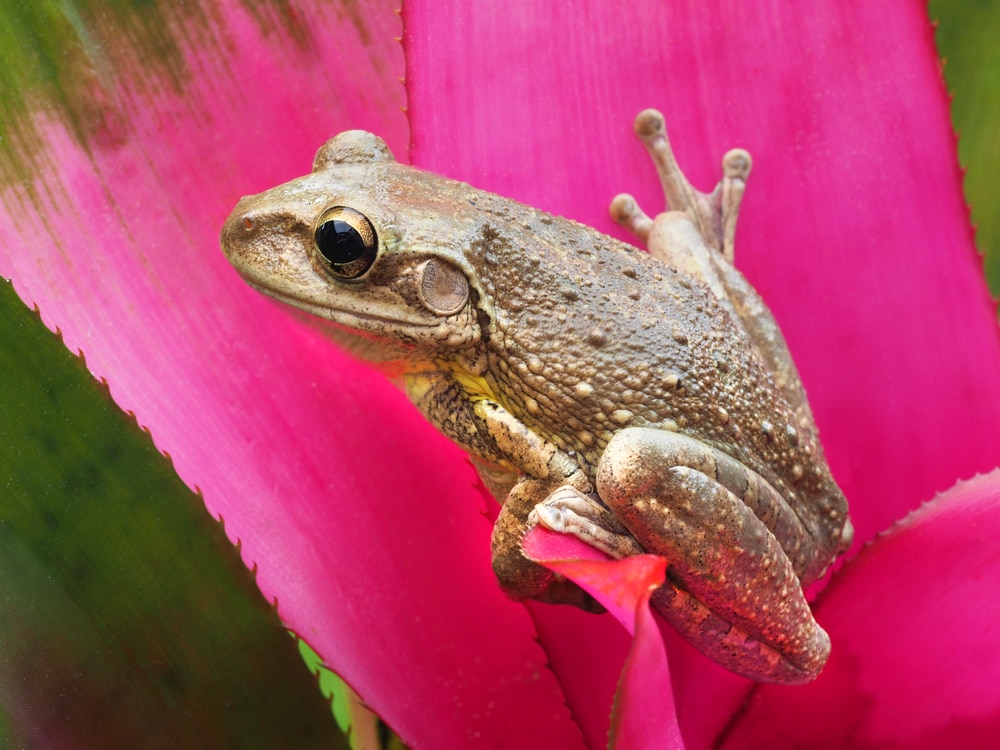
Cuban treefrogs are the largest treefrog species in North America, but they’re native to the Caribbean. Originally brought into southern Florida, Cuban tree frogs have spread throughout the state.
Adults can reach a length of around 5 inches (12.7 cm) and have bumpy backs, large footpads, and the skin on the head is fused to the skull. They can vary in color dramatically, from pale green to tan or dark brown.
The problem with this invasive species is found in their diet. They typically feed on other frogs, lizards, and insects. Not only do they outcompete native species for food resources, but they’re also larger than most native frog species. This allows them to feed on native amphibians and causes population decline in those species.
You may also like: Check out the 20 Different Species of Spiders in Florida: With Images, Facts, and More!
FAQ
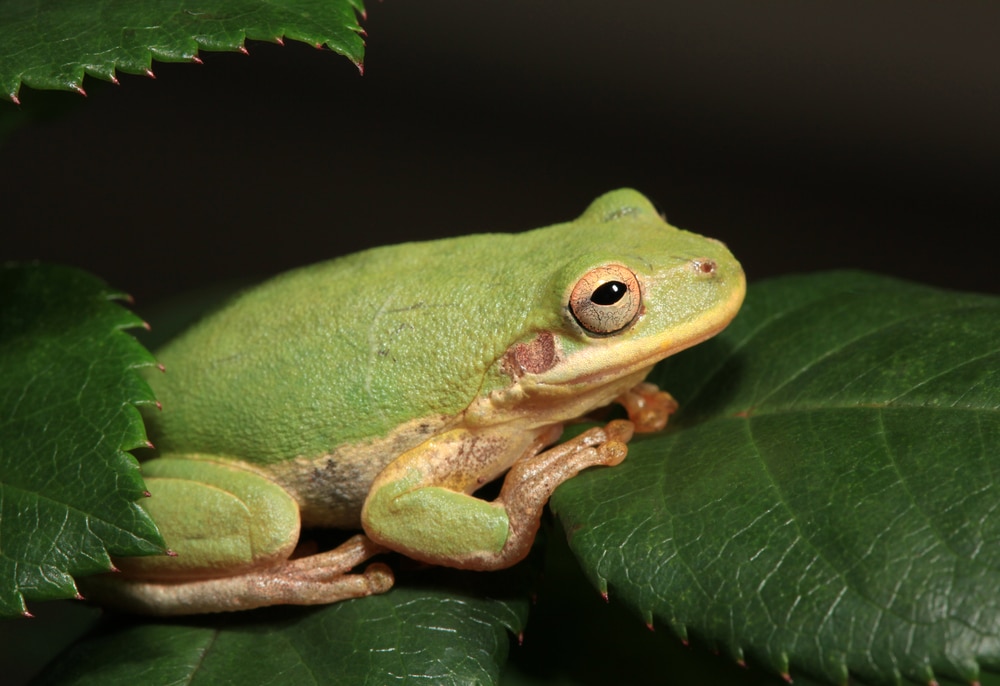
Are frogs good to have around?
Frogs are great to have around the home or in your garden. A single frog can eat as many as 100 insects in a single night. Having them around is especially good in Florida, as many frogs will feed on the mosquitos and other pests Floridians have come to hate so much.
Are toxic frogs dangerous?
For the most part, poisonous frogs in Florida aren’t especially dangerous to people. As long as you aren’t eating the secretions or injecting them into yourself, you will likely be fine.
Cane toads pose a different issue in parts of Florida, simply because many animals, such as household pets like cats and dogs, can try to eat them. When this happens, the pets likely die because of the poison.
There aren’t any frogs with venomous bites or that can kill you if you touch them. If you do need assistance removing poisonous amphibians from your home, call local pest companies or the Florida Fish and Wildlife Commission.
Can frogs give you warts?
Because frogs and toads can have bumps on their skin that look much like warts on people, some have always believed that touching them can cause you to get warts. This is a complete myth, as none of the secretions amphibians give off can cause you to get warts.
In the case of extremely poisonous frogs and toads, they do secrete stuff that can irritate your skin if it gets in a cut. For humans, you aren’t going to get warts from touching frogs.
You may also like:
Discover different species found in Florida here:

Wild Monkeys In Florida | Poisonous Frogs In Florida | Anoles In Florida | Birds Of Florida | Vultures In Florida | Woodpeckers In Florida | Hawks In Florida | Florida Freshwater Fish | Alligators In Texas | Sharks in Florida | Largest Alligator In Florida | Beach Birds Of Florida | Snakes In Florida | Florida Turtles | Owls In Florida | Lizards In Florida | Florida Spiders | Geckos In Florida | Scorpions In Florida |









